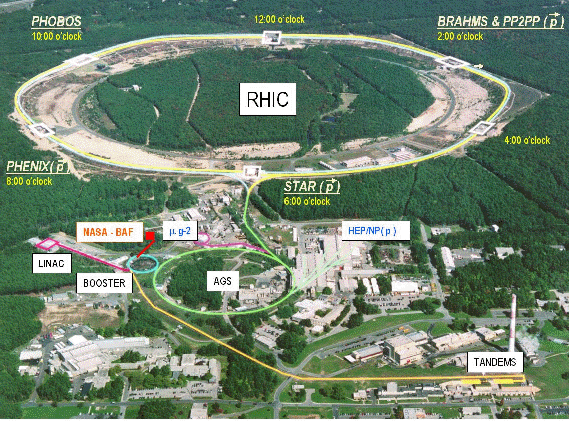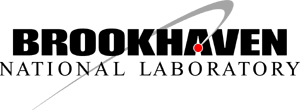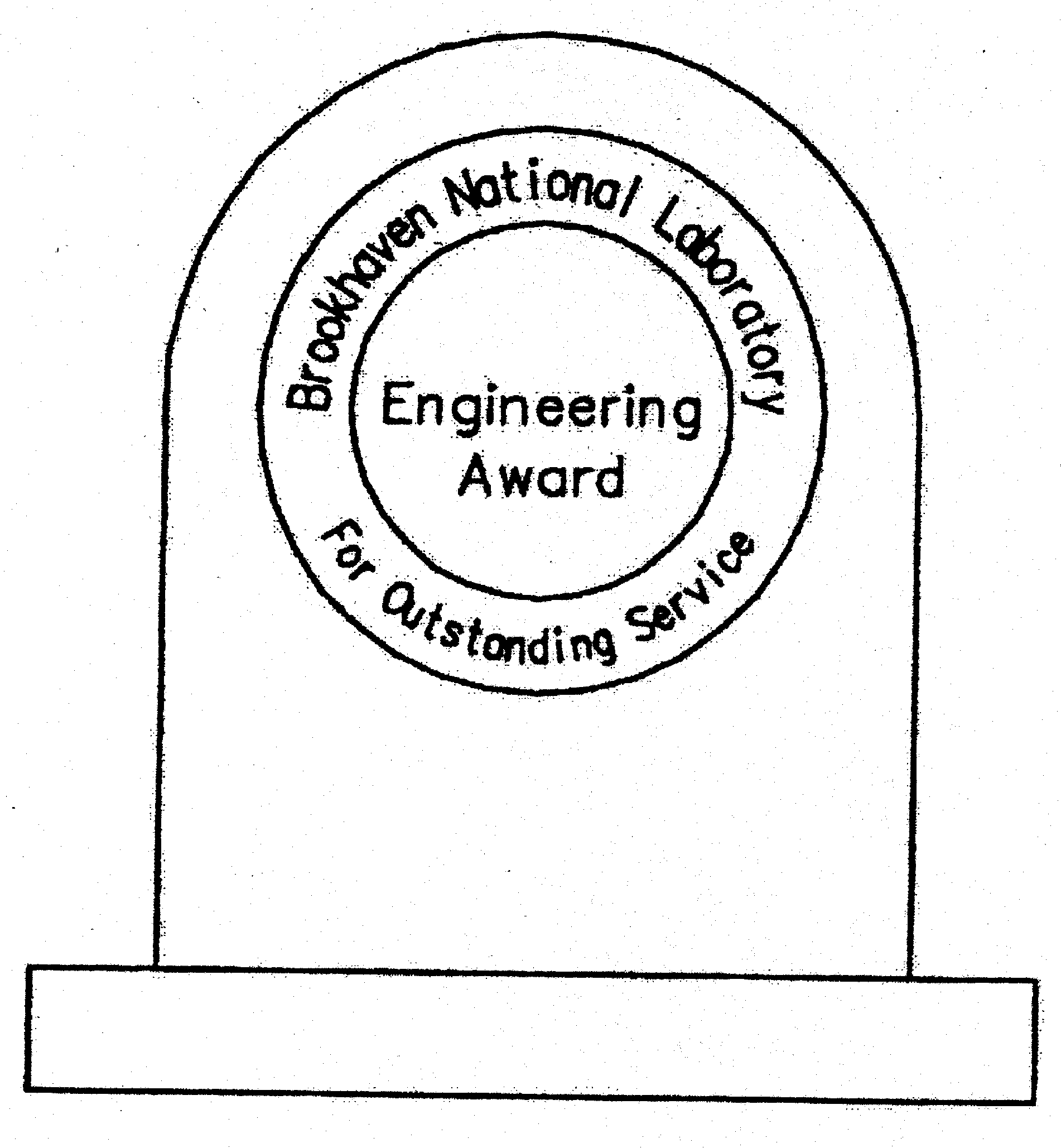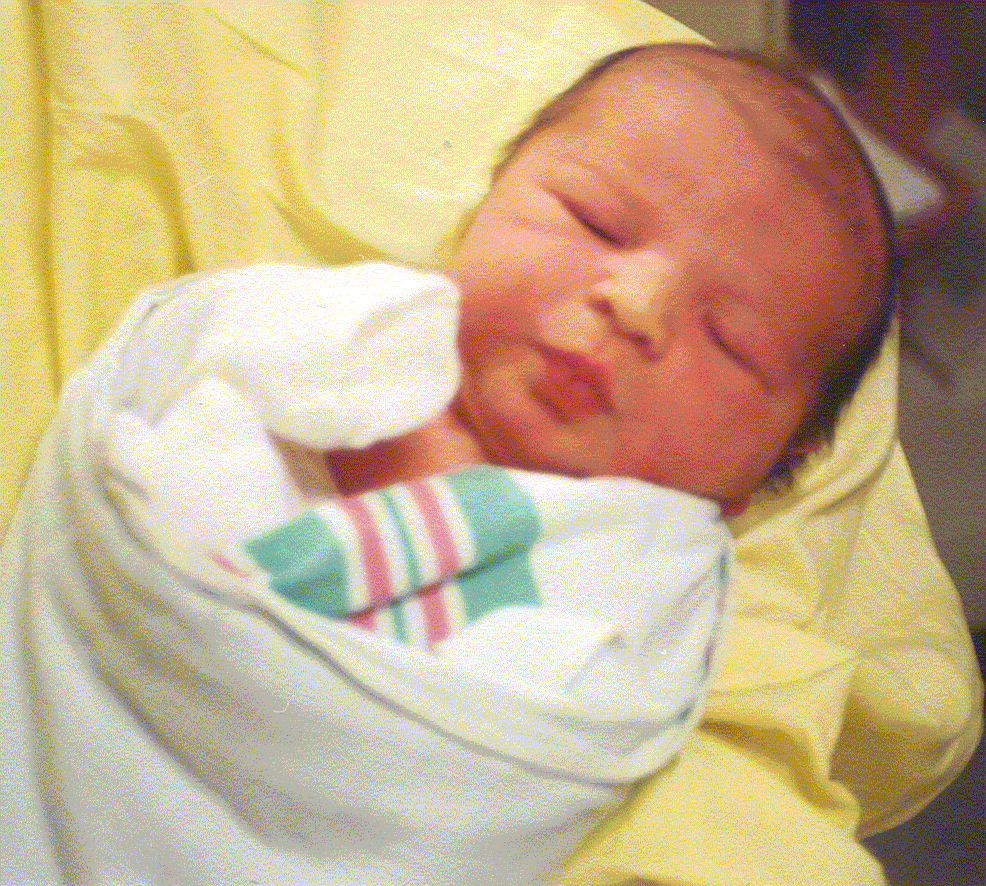


COLLIDER-ACCELERATOR DEPARTMENT
February 2000
A call went out for a name to give our newsletter. The list of suggested names for our newsletter are listed below. Please check the name you choose and then click on the SEND button.
Please remember that any news that you have pertaining to our department or personnel is appreciated. For example: what's going on in your work area, length of BNLemployment anniversary, birthdays, weddings, new births, retirements, "gossip". It's up to you - it's YOUR newsletter; just send your input to me lopresti@bnl.gov.
Penny Lo Presti
![]()
 A Note From Our Chairman
A Note From Our Chairman
I am delighted to see the great reception that our newsletter has received from you all. A special thanks must go first to Penny Lo Presti for proposing the idea and who has taken on the publishing of our yet to be named gazette. Congratulations to Penny on becoming a grandmother again.
The department , as you are all aware of, continues to be very busy in all areas. RHIC is our number one priority and is on the verge of going back to a commissioning / operations phase. A masterful job was done by all in replacing bellows and cryogenic valves, installing alcove air conditioning, repairing cold boxes and 50 ampere power supplies, working with a vendor to correct 150 ampere power supply design flaws, repairing and installing BPM electronics, and continuing the installation of BRAHMS, PHENIX, PHOBOS and STAR, as well as a multitude of more items. The first of several dry-runs was exceptionally successful in finding problems and their solutions.
The Spin project has the first snake installed in the RHIC ring.
The AGS fixed target program has been busy with the g-2 experiment, E821. They are ahead of last years record data collection pace. The new sweeper magnet has been a great success in eliminating the "flashlet" problem.
The MP6 tandem, as you will read down below, has come back to life. The EBIS effort has made great strides, as you will read in an upcoming issue. The OPPIS source is nearing the commissioning phase.
On the project fronts, the SNS has converged now to a 1.0 GeV accumulator ring with the ability to increase in an energy to 1.3 GeV (4 MW option).
BAF is proceeding on schedule. As RHIC becomes operational, we will focus more of our engineering efforts towards this construction effort.
The 70 MeV Cyclotron Isotope Producer conceptual design effort, led by Jim Mills at PE, is well on its way to being completed
Peter Thieberger is leading the effort to commission the medical tandem accelerator in building 945. This machine had been originally built by Advance Energy Systems, ,a.k.a. Grumman, to test airport luggage for explosives. It is our intent to use this machine as a source of neutrons for BNCT research.
The medical synchrotron design effort has become even more exciting, as more institutions are expressing interest in obtaining such a machine for their hospital’s radiation oncology department.
The next several months will also see us in the midst of an alphabet soup of reviews and audits. There will be both DOE NP and HEP reviews, an SNS cost and schedule review, an ISM verification, and EMS and ISO audits. In addition we will have a series of ORR and an ARR review of RHIC and the experiments.
Derek Lowenstein
![]()
Administration
John Hauser
![]()
Beam Components and Instrumentation
Several engineers in the group spent time in Tucson, AZ for the US particle accelerator school. We have come back a lot smarter now and can do our jobs even better!!
For operations, we have successfully have switched from protons to heavy ions and back.
For the AGS, we are now
concentrating on reducing the number of DNA's (datacon readback problems) in the
vacuum system. For RHIC, we are in the process of installing the
first scraper in the tunnel. The second will follow shortly. The
movable BPM has a similar motor drive system and will be installed shortly after
the scraper. After the scrapers are installed, we will direct a large
amount of effort towards the RHIC polarimeter. We should start wiring this
device by the week of the 14th. The polarimeter is due to be completed by
the end of February. The group still has a large amount of effort directed
at the RHIC loss monitors. A large part of this work (mechanical
modifications) will be completed by mid February. Individual channel
testing, threshold testing, database work, and a host of other details will
continue until the end of the month. Also at RHIC, work will continue
on solving problems with the beam current transformers and R&D on the AC
dipole. And finally, work on another top priority, the completion of the MP6
bypass instrumentation continues. A large part of the wiring is completed.
After the wiring is completed, overall system testing will commence. We
should be finished with MP6 bypass instrumentation by the end of February.
Tom Russo
![]()
Collider Mechanical Support
The DU repair was finished on schedule with the welding completed on 01/05/00. Work continued on the interconnects at DU7Q7 and D0 in the sector 3 yellow ring as the short found there was repaired. The last of these two interconnects was closed on 01/18/00, sealing all the in-ring insulating vacuum.
The majority of the CMS Group will be employed with the continuing magnet press work in building 924 through February. The Group will also concentrate on the assembly and installation of the pin diode holders for the primary collimators in February, the beginning of crystal collimator assembly in February and March, and the assembly of holders for the laser interferometer, to be used with this collimator, in March. Spin Rotator Warm-to-Cold Transition prototyping will be on-going beyond March.
G. McIntyre
![]()
Experimental Support and Facilities Division
With the turn on of RHIC fast approaching, the technicians and engineers of the Experimental Support and Facilities Division are hurrying to complete the four RHIC experiments.
With STAR, the detector is in place, but the large solenoid is undergoing fine tuning, the safety systems checked, and some advanced work for the installation of future detector elements is done.
The gas piping for the plethora of detectors in PHENIX has continued to be the major use of ES&F effort.
All the magnets for PHOBOS are in along with their associated moveable platforms. Final "Run and Test" is all that is needed to make the detector ready to run. The PHOBOS detector infrastructure is largely in place, awaiting installation of the limited set of silicon detectors for the commissioning phase of this year's run.
Around the ring, the Division has coordinated the installation of air conditioning in the alcoves, and has started the installation of a perimeter fence to control access to the berm. Joe Scaduto with help from Ali Javidfar has been preparing the area in the A3 line of the AGS to provide a test bed for targeting tests for the first stage of a future muon collider or neutrino source. Some shielding for this facility is being re-cycled from the muon filter in the neutrino(U) line.
The construction of BAF is another major activity of our Physicists, engineers and technicians.
Alan Carroll
![]()
Preinjector Group
The linac has been running along fairly smoothly for AGS and BLIP. This year we are running for the first time on Omar Gould’s new linac timing system, and happily there have been relatively few minor bugs to shake out. Regarding the new Optically Pumped Polarized Ion Source now being installed, the superconducting solenoid has been cooled down successfully and energized. We continue to get strong outside support from TRIUMF and INR, Moscow (Russian is becoming the second language of the linac techs).
With EBIS, we have been extracting ions and transporting the beam to a time of flight analyzer to measure the charge state distributions. We have now measured some very nice xenon ion spectra from the source, another big milestone for this project.
At the Tandem, there has been quite a bit of running for outside users, but in addition, tandem personnel have managed to make a lot of progress on MP6 (the second tandem, to be a RHIC backup) and the new bypass line. MP6 was closed up, pressurized, and then voltage conditioned to 10 MV. This was a big step, and it was a pleasant surprise that the voltage went up so quickly. It was then opened to fix a few problems which were uncovered, closed, opened, closed, opened ….. It has now reached 13.7 MV, quite an accomplishment, since this machine hadn’t been run for 10 years, and never above approximately 10 MV. Many members of the tandem group were happy to finally see the doors close on MP6, so they could spend a little less time climbing and crawling inside that tank (talk about a room without a view!).
J. Alessi
![]()
Vacuum Systems
The vacuum gauge set point interlock at g-2 beam vacuum has caused g-2 a few hours of down time. Due to repetitive failure of ion pump power supplies at g-2, three cryopumps will be installed during the proton-gold switch exercise. We have found two leaks in the Booster vacuum, which resulted in two-decade increase in pressure, one was repaired. The DNA problems in approximately twenty AGS ion pump power supplies were located and repaired.
In RHIC, all the insulating vacuum volumes, including magnet cryostats, valve boxes and VJRs, have been restored. We are eagerly waiting for the start of helium scrubbing and cool down, so the helium background, if any, in these volumes can be measured and monitored. Vacuum gauges in all valve boxes and 113 VJR volumes were installed and commissioned up to control console level.
Beam pipes at Brahms IP region was successfully baked. The bakeout of the Star IP beam pipes is underway. High vacuum at injection Lambertson regions was restored after the installation of new BPMs so was at the yellow beam dump and yellow storage cavities. The installation of beam scrapers and polarimeter has begun. One staff attended the gas jet target workshop to assess the jet's impact to vacuum level at Brahms IP region.
We have survived another SNS cost review. We have received, for a change, some positive feedback from the review committee. The purchase order for SNS ring dipole chambers was placed, ahead of schedule and below budget. The chamber bakeout furnace RFQ is complete and the proposal from the low bidder is being reviewed. One staff member attended the vacuum standardization meeting held at ORNL and presented the development both in vacuum hardware and control.
Two abstracts on SNS and RHIC vacuum systems were submitted to EPAC-2000. Several candidates were interviewed for positions in the Vacuum Group and we have made offers to two highly qualified individuals, one as physics associate and the other as senior technical specialist. Preparation is underway to refurbish office and lab space at 911A for staff currently residing at buildings 820 and 830.
M. Mapes
![]()
Water Systems
We've finally received funds to proceed with construction of a new SEM cooling system. An ILR has been submitted to Plant Engineering to bid the work and provide field supervision during the construction stage.
We're progressing with the preparation of a CDR (conceptual design report) for a 70 MEV Cyclotron. If funded the cyclotron will be used jointly by the Chemistry & Medical departments.
Design work is progressing, for cooling systems, for the BAF project.
Plant Engineering has begun construction for the upgrade of the Tandem cooling system.
Drawings are near completion for an upgrade to the Westinghouse cooling system.
Ed Dale
![]()
SNS Project
As reported in last month’s newsletter, the Spallation Neutron Source Project represents a 1.36B$ national effort by a multi-lab collaboration. BNL’s portion of this six year construction project is about 150M$. The participating labs include:
Argonne National Laboratory – Experiment
Equipment
Brookhaven National Laboratory – Ring and Transport Lines
Lawrence Berkley National Laboratory – Front End (Ion Source +RFQ)
Los Alamos National Laboratory – Linac
Oak Ridge National Laboratory – Conventional, Target, Proj. Mngmt.
Thomas Jefferson National Laboratory – Superconducting RF for Linac
The SNS Project Office at Oak Ridge National Laboratory conducted a review of a superconducting Linac option for the SNS machine in late January. Indications are that the Project Office (PO) will go forward with this option in place of the warm Linac that was part of the original baseline design. Thomas Jefferson Laboratory was brought into the collaboration and will oversee development of the superconducting CCL cavity and cryogenic system.
One of the benefits of a SC Linac is the potential for future upgrades from 1.0 GeV to 1.3 GeV beam energy. This future benefit, however, can only be realized if the infrastructure for the ring and transport lines are in place. The design change impact to BNL is primarily in the HEBT injection line and Accumulator Ring (AR) where magnet components need to be upgraded to be "compatible" for higher beam energy that is likely to be achieved. Thus, to first order, changes include increased apertures (vacuum, magnets and associated electro-mechanical redesigns, etc.), a larger circumference accumulator ring and a longer injection line. The impact on cost and schedule is currently being evaluated.
Familiar names and faces seen about town recently include Bill Schneider (J-Labs), Rudy Damm (ORNL) and Don Brown, all former BNL employees. Bill is involved with the SC Linac; Rudy, who is new to the SNS Project, will head a site engineering group and will be our point man for "Installation" at ORNL; Don remains active as a cryo consultant.
Upcoming events include:
W. McGahern
![]()
We WELCOME Aboard3.
Bill Birkholz - Bill
is now working with the SNS Project.
Ray
Karol - joins us from the
Reactor Division and is now the C-AD Head of ES&H/QA
Ronald May - Ron
has trasferred from Plant Engineering and is a technician working with Bill
Venegas in the Controls Group.
Noreen O'Donnell
- is the new C-AD Librarian. Noreen is in the Library, located on the
third floor of 911 every day from 9 AM to noon.
Ioannis Papaphilippou
- Ioannis joins the SNS
project. His office is located in bldg. 817 and his extension is 4072.
Sheng Peng -
Sheng
will be working with John Smith on the SNS Project.
Christopher
Salat - Chris
joins us from the Magnet Division and is working with the Cryogenics Group.
and say FAREWELL to
Michael O'Donnell of
the Cryogenic Systems Group left BNL.
James Johnsen of the Mechanical Services Group
is transferring to to Plant Engineering.
Thomas Shea engineer in the RF and Instrumentation
Group will be leaving us on February 29.
We wish
them all good health and happiness.
![]()
 |
Congratulations to JIM CULLEN recipient of the BNL Excellence in Engineering award. Jim was the responsible engineer for the construction of the worlds largest superconducting magnet used in the g-2 project. This kind of achievement has never before been done anywhere. You've made us proud, Jim! |
![]()
![]()
 |
Nicholas Joseph Lo Presti arrived on the scene Friday evening, February 4. He weighed in at 7 lbs. 9 oz and is 21" long. Nana Penny has only a "few" pictures, of course. |
![]()
![]()
![]()
There will be a US-LHC (Large Hadron Collider) Meeting on Accelerator Physics Experiments for Future Hadron Colliders on February 22-23, 2000. Participants and registration information can be found at: http://www.richome.bnl.gov/LHC/org/Beam2000/index.html
The meeting goals are: To plan experiments in the LHC era, plan (re)commissioning studies at hadron colliders relevant to the LHC, investigate new experimental techniques and form experimental collaborations. You can find the workshop schedule at the above indicate web site.
![]()
The Reactor Division is in the processing of disposing excess materials that they will not be using. They have asked that the word be put out the following is available from their secondary water chemical inventory which was supplied by Betz Entec Chemical.
| Betz 419 Storage Tank - 1200 gal | Betz 30K Storage Tank - 1100 gal | Sulfuric Acid Tank - 1270 gal |
| Betz 65 Day Tank - 20 gal | Betz 30K Day Tank - 15 gal | Betz 419 Day Tank - 20 gal |
| Betz 365 - 30 gal | Betz 65 - 55 gal | Betz 407C - 55 gal |
| Super Shock - 5 gal | Betz Foamtrol CT - 1.5 gal | 99.9% pure charcoal grade 965 - mesh size - (24) 200lb. drums |
| Wolframite - particle size is powder - granular mixed - (3) 55 gal. drums |
If your section can use any of these materials please contact: Ray Lo Presti x 5755, Bldg. 750A or rlopresti@bnl.gov
![]()

Congratulations to the following - they have become American citizens!
![]()
| Sunday | Monday | Tuesday | Wednesday | Thursday | Friday |
|
|
1 |
2 |
3 Particle Physics Seminar Bldg.510 - 11AM |
4 |
5 |
||
| 6 |
7 |
8
Time Meeting 1:30 |
9 Physics Dept. Lunchtime Open Discussion RHIC Theory & Experiments |
10 Informal Seminar-11 AM "Modeling & Improving Positron Prod. & Transort in the CESR Linear Accelerator" |
11 |
12
|
|
13
|
14 
|
15 Time Meeting 1:30 |
16 |
17 |
18 Time Cards Due! |
19 |
|
20 |
21 Holiday |
22 Time Meeting 1:30 US-LHC collaboration Mtg. |
23 US-LHC collaboration Mtg. --------------- Lunchtime Discussion RHIC Theory and Experiments Rm C-Berkner |
24 |
25 |
26 |
|
27 |
28 Informal Seminar "Simulation Study of Electron Pblems & Beam Scrubbing for CERN LHCj 911B-LCR-11AM |
29 Time Meeting 1:30
(if you've been putting it off - now's the time to "pop" the question) |
|
|
|
 MARCH 2000
MARCH 2000
| Sunday | Monday | Tuesday | Wednesday | Thursday | Friday |
|
| 1 | 2 | 3 | 4
|
|||
| 5 |
6 |
7 Time Meeting 1:30 |
8 |
9 |
10 |
11 |
12 |
13 |
14
Time Meeting 1:30 |
15 |
16 |
17 Time Cards Due! 
|
18 |
19 |
20
|
21 Time Meeting 1:30 |
22 |
23 HENP PAC Mtg.
|
24 |
25 |
26
|
27
|
28 Time Meeting 1:30
|
29
|
30
|
31
|